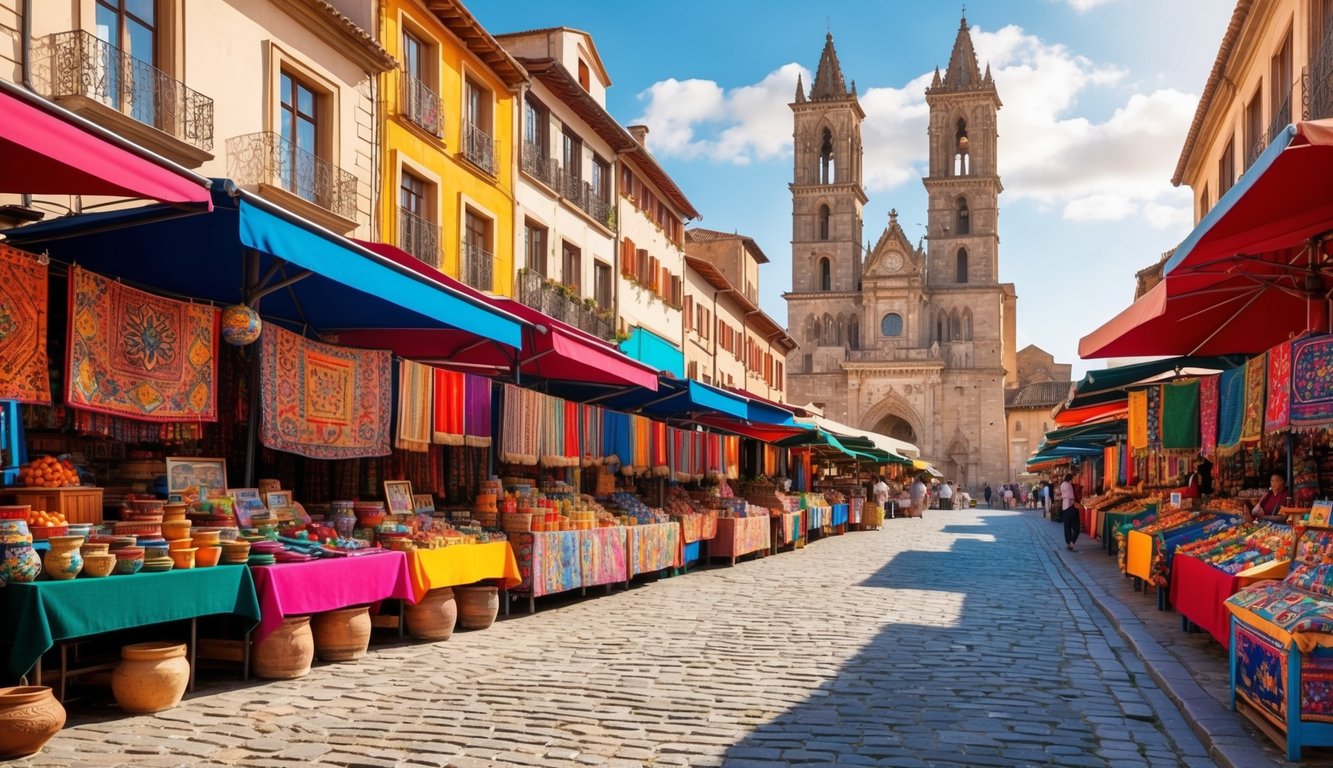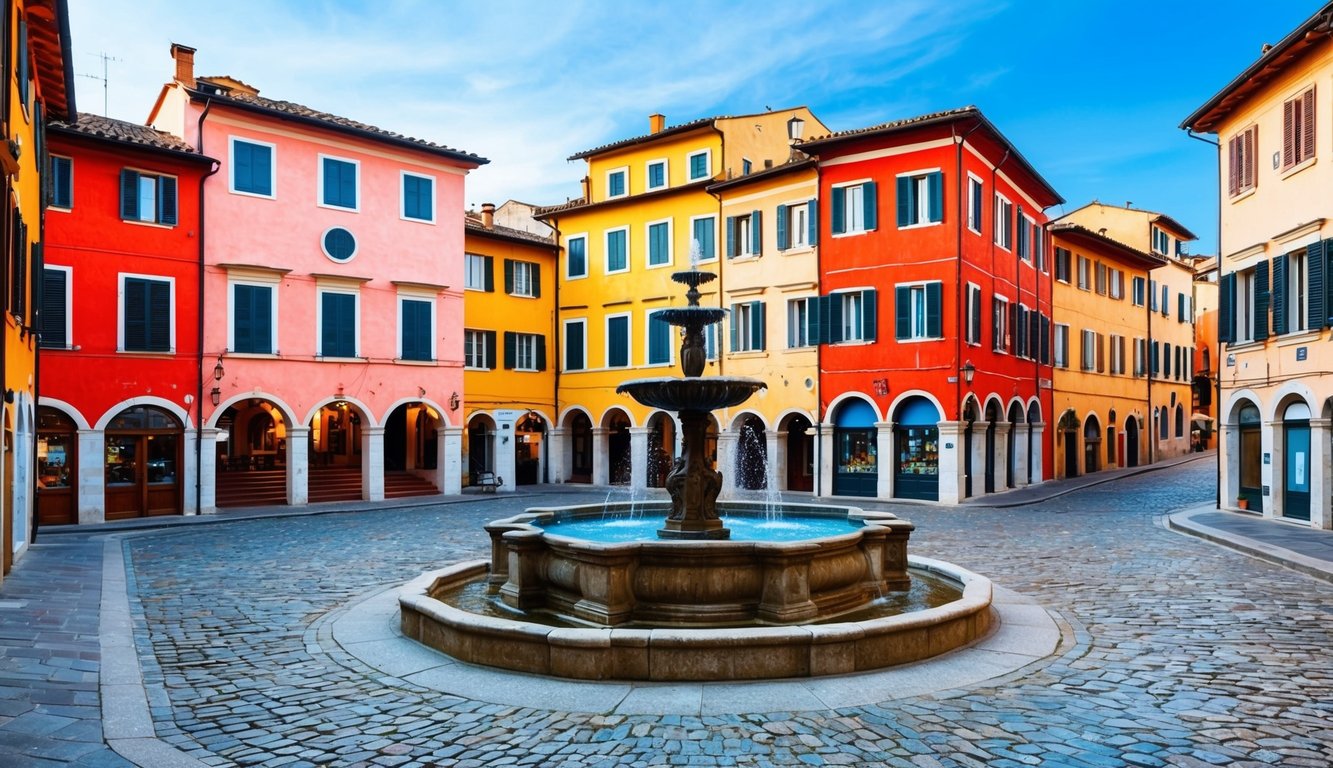Don’t Miss Out On This Unique Astrological Opportunity
Are you tired of spinning your wheels and getting nowhere? Simply put, you’re out of sync: you’re out of alignment with your astral configuration.
But: there’s a kind of map that can help you reclaim your alignment. Think of it as your own personal blueprint to success and happiness: a blueprint that will help you live your most amazing life.
Get started here.
Nestled in the heart of the Veneto region, Padua is a city that seamlessly blends ancient history with vibrant modern life.
Its charming streets invite you to explore a place renowned for both historical significance and cultural richness.
Wander along its avenues and discover the city’s artistic marvels, including the famous frescoes that tell stories of love and legacy.
Padua offers a unique glimpse into the past with its Roman remnants and medieval landmarks, while its dynamic cultural scene reflects the zest of contemporary Europe. This city isn’t just about looking back; it celebrates the present with a lively blend of experiences that will captivate your senses.
Whether you’re an art enthusiast, a history buff, or just someone seeking a taste of Italian charm, Padua promises to leave a lasting impression.
Dive into a world where every corner tells a story, and every visit feels like a new discovery.
Key Takeaways
- Discover Padua’s blend of history and modern life.
- Explore its rich cultural and artistic heritage.
- Enjoy the vibrancy of its contemporary lifestyle.
History and Heritage of Padua
In Padua, you’ll find a city with a rich tapestry of history and culture.
Its medieval past, prestigious university, and remarkable UNESCO World Heritage Sites paint a vivid picture of its evolution through the centuries.
Historic Moments and Medieval Past
Padua’s story begins with legends of its founding by the Trojan hero Antenor.
This ancient city, known as Patavium during Roman times, played a significant role in northern Italy.
You’ll discover how it thrived as a lively center during the Middle Ages.
In this period, powerful families and guilds shaped the city.
It also became known for its contributions to politics and commerce.
The city experienced remarkable growth and development during the medieval times.
Its strategic location near the River Bacchiglione influenced its prosperity.
Important events, like conflicts and alliances with neighboring cities, marked Padua’s journey through history.
The influence of figures like Livy, a Roman historian born here, adds to its historical significance.
The University of Padua
The University of Padua, established in 1222, stands as one of the oldest in the world.
It has been a beacon of learning and innovation for centuries.
As a student or visitor, you’ll be standing where renowned figures like Galileo Galilei once taught.
Its commitment to academic freedom has attracted scholars from across the globe.
You’ll learn about its pioneering contributions to science, medicine, and the arts.
The university nurtured talents like humanist thinker Pietro Bembo and scientist William Harvey.
Its libraries and museums hold treasures of knowledge and history.
With its vibrant student life, the university continues to be a hub of activity and cultural exchange.
UNESCO World Heritage Sites
Padua boasts two UNESCO World Heritage Sites that highlight its cultural importance. The Botanical Garden of Padua, established in 1545, is the oldest university botanical garden globally.
Its collection reflects the history of botany and offers an oasis of beauty and learning.
Another gem is the Scrovegni Chapel, famous for its 14th-century frescoes by Giotto.
As you explore these vivid artworks, you’ll gain insight into medieval religious art and architecture.
This masterpiece beautifully showcases the cultural and artistic achievements of Padua, leaving visitors in awe of its historical heritage.
Cultural Richness and Artistic Marvels

Padua is a city rich in culture and artistic beauty.
Its art and architecture reflect centuries of history and innovation.
From the breathtaking frescoes at the Scrovegni Chapel to the historic churches, each site tells a unique story.
Art and Frescoes of Padua
When you visit Padua, you’ll find yourself enchanted by its art, especially the famous frescoes. Giotto’s frescoes in the Scrovegni Chapel are among the most significant, showcasing the life of Christ in vibrant detail.
These 14th-century masterpieces changed the course of art during the Italian Renaissance.
They use vivid colors and lifelike figures to give you a glimpse into the past. Fresco cycles like these are a highlight you shouldn’t miss, capturing the city’s artistic soul.
Legendary Artists and Architects
Padua boasts a long list of legendary artists and architects.
Star figures include Andrea Mantegna, who left his mark with detailed paintings and Donatello, famous for his bronze statue of Gattamelata.
Titian and Menabuoi also contributed significantly, with works that continue to attract art lovers.
The city is also graced by the work of Andrea Palladio, whose architectural style influenced the Western world.
Each visit offers a unique opportunity to connect with these remarkable figures and their lasting creations.
Churches and Religious Sites
Some of Padua’s most stunning architecture can be found in its churches.
The Basilica of St. Anthony, or Sant’Antonio, stands out for its ornate design and important relics.
You can explore amazing sites like the Cathedral and its Baptistery, filled with artistic treasures.
Marvel at the intricate frescoes and stunning details each church presents.
These religious sites not only serve as places of worship but also as hubs of historic and cultural significance.
Museum and Gallery Discoveries
Exploring Padua’s museums offers a dive into history and art.
The Civic Museums of Padua are home to archaeological finds and modern art exhibits.
At the Palazzo della Ragione, discover centuries-old frescos and immerse yourself in the local culture.
You’ll also find historic astronomical instruments that reflect the city’s scientific contributions.
Padua’s galleries and museums showcase the city’s blend of art and science, providing a complete cultural experience.
Modern Encounters and Lifestyle

In Padua, you’ll find a mix of ancient charm and modern conveniences.
Whether you’re exploring education, transportation, or culinary specialties, there’s much to experience in this vibrant Italian city.
Leisure and Recreation
In Padua, leisure and recreation are at the heart of daily life.
You can enjoy concerts, theater performances, and music festivals throughout the year.
The city has a lively music scene that offers something for everyone.
Sports enthusiasts will appreciate the variety of activities available.
There are numerous parks for jogging and cycling, as well as sports facilities for playing soccer, basketball, and tennis.
The local Padovani enjoy a healthy, active lifestyle.
Educational and Scientific Excellence
The University of Padua stands as a beacon of educational brilliance, attracting scholars worldwide.
It’s one of the oldest universities, known for modern medicine and science studies.
Historically, it was home to notable figures like Galileo Galilei.
You will find a range of educational institutions and research centers that contribute to its global reputation.
This makes Padua an ideal place for academics and researchers.
The university’s influence extends into local life, fostering a culture of learning.
Transport and Accessibility
Padua offers various transportation options, making it easy for you to navigate the city. Trains provide efficient connections to major Italian cities, while buses and taxis offer convenient local travel.
The city’s road network is well-developed for cars, ensuring hassle-free driving.
The Marco Polo Airport in Venice is the nearest major airport, serving international and domestic flights.
Within the city, you’ll find public transport accessible and affordable, allowing you to explore with ease.
Culinary Delights and Gastronomy
Padua is a haven for food lovers.
The culinary scene is rich with local pasta dishes and traditional Italian fare.
You can indulge in gastronomic experiences with fresh, local ingredients at every corner.
Local markets and restaurants offer a variety of foods, ensuring your palate is always delighted.
You can savor regional specialties, including risottos, cheeses, and desserts, all celebrated for their authentic flavors.
The city’s vibrant food culture combines tradition and innovation, reflecting the warmth of the Padovani people.
Exploring Padua
Padua is a lively Italian city with a rich history and a stunning mix of attractions.
You’ll discover historic landmarks, serene parks, and helpful tips for planning a delightful visit.
Top Attractions and Landmarks
Padua is filled with remarkable sights.
Explore Prato della Valle, one of the largest squares in Europe, surrounded by the beautiful Oval Canal.
Don’t miss the Basilica of Saint Anthony, known as Il Santo, where you can see stunning frescoes and serene cloisters.
The famous Palazzo Bo is home to the oldest university botanical garden, the Orto Botanico, a UNESCO World Heritage site.
In the squares like Piazza della Frutta, the bustling atmosphere and historic shops provide an authentic taste of the city.
Green Spaces and Nature
Connect with nature at Padua’s green spaces.
Stroll through the Botanical Garden, known as Orto Botanico, where diverse plant species thrive in beautifully arranged gardens.
For a casual walk or picnic, head to Prato della Valle.
Its vast open space and tree-lined paths create a peaceful retreat amid the city bustle.
You can relax by the River Bacchiglione and enjoy views that capture Padua’s natural beauty.
These parks offer a perfect break from exploring the busy streets.
Itinerary Planning Tips
To make the most of your visit, start early to enjoy popular sites like Il Santo and Palazzo Bo without crowds.
Consider using a map for easy navigation around Padua’s charming arcaded streets and squares.
Plan your visits to Venice and Verona—both are just a short drive away.
If shopping interests you, explore the vibrant markets in central squares or upscale stores on historic streets.
By balancing well-known landmarks with quieter parks, you’ll enjoy a fulfilling experience.
Frequently Asked Questions

Padua is a place full of history, home to one of the oldest universities in Europe, and is enriched by art and culture.
You can find both modern amenities and historical landmarks in this charming Italian city.
What are some notable attractions to visit in Padua?
Padua is famous for its stunning Scrovegni Chapel, which showcases early-Renaissance art.
Don’t miss the Basilica di Sant’Antonio, known as Il Santo.
There’s also the bustling Palazzo delle Erbe, where you can experience local life.
How do you pronounce the name of the city Padua?
The name “Padua” is pronounced as “PAH-dyoo-ah,” with the stress on the first syllable.
In Italian, it is “Padova,” pronounced “PAH-doh-vah.”
What kind of medical facilities can one find in Padua?
Padua offers excellent medical facilities.
It is known for its advanced healthcare services and has a number of hospitals and specialized clinics.
The city’s historical Hospital of Padua, part of its university, is renowned for medical research and education.
Can you tell me about the University of Padua and its history?
The University of Padua is one of Europe’s oldest universities, founded in 1222.
It has a rich history of fostering intellectual growth, having hosted famous scholars like Galileo.
The university continues to be a leading center of education, attracting students worldwide.
What sports are popular in Padua, and where can I watch them?
Soccer and rugby are popular sports in Padua.
You can catch a local soccer match at the Stadio Euganeo, where the city’s team plays.
Rugby fans can enjoy exciting matches featuring local clubs, which are an integral part of the community.
Which plays by Shakespeare are set in Padua?
Two of Shakespeare’s plays are partially set in Padua: “The Taming of the Shrew” and “The Merchant of Venice.” The former unfolds mainly in this city, while the latter includes some scenes set here as well.



